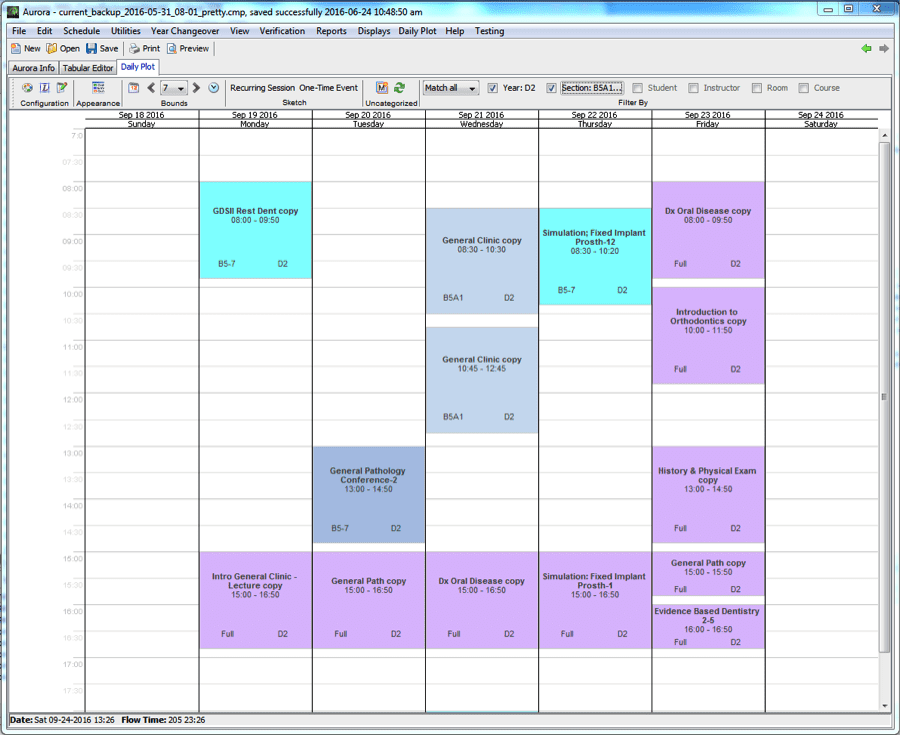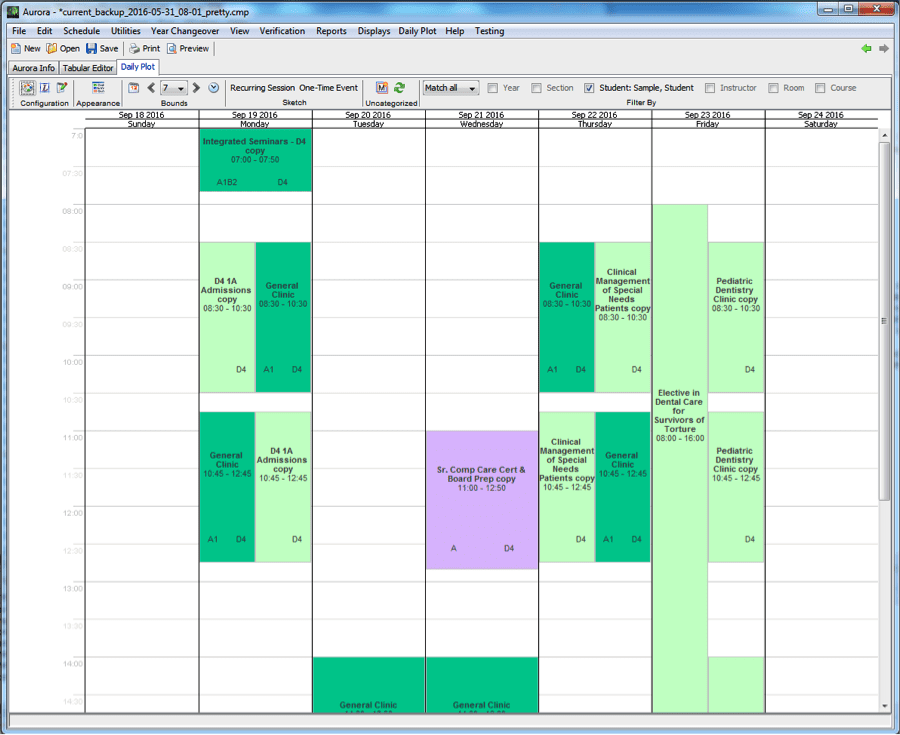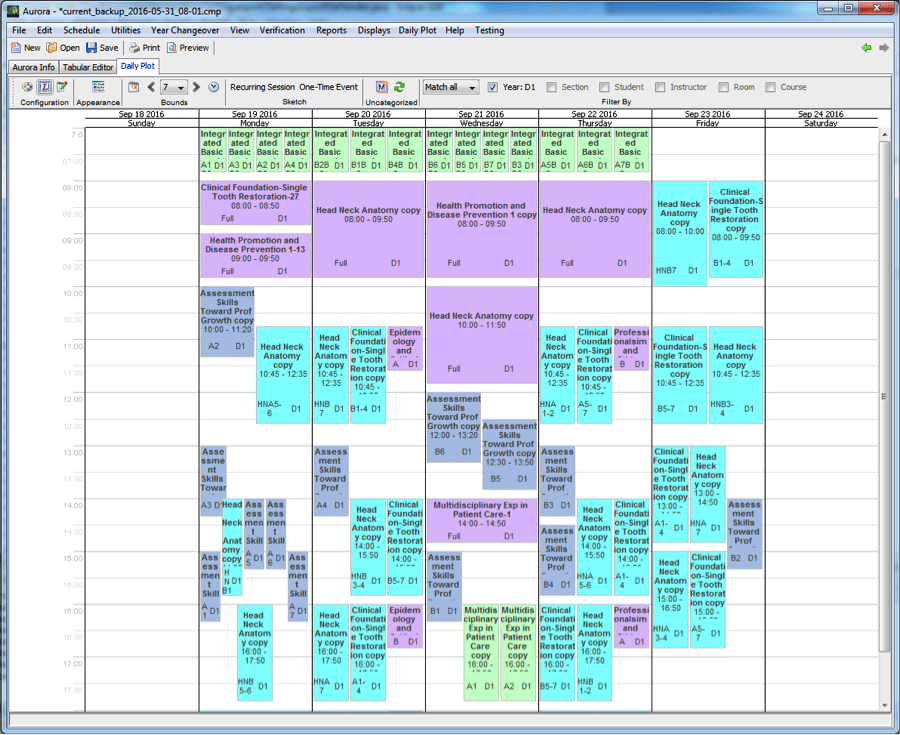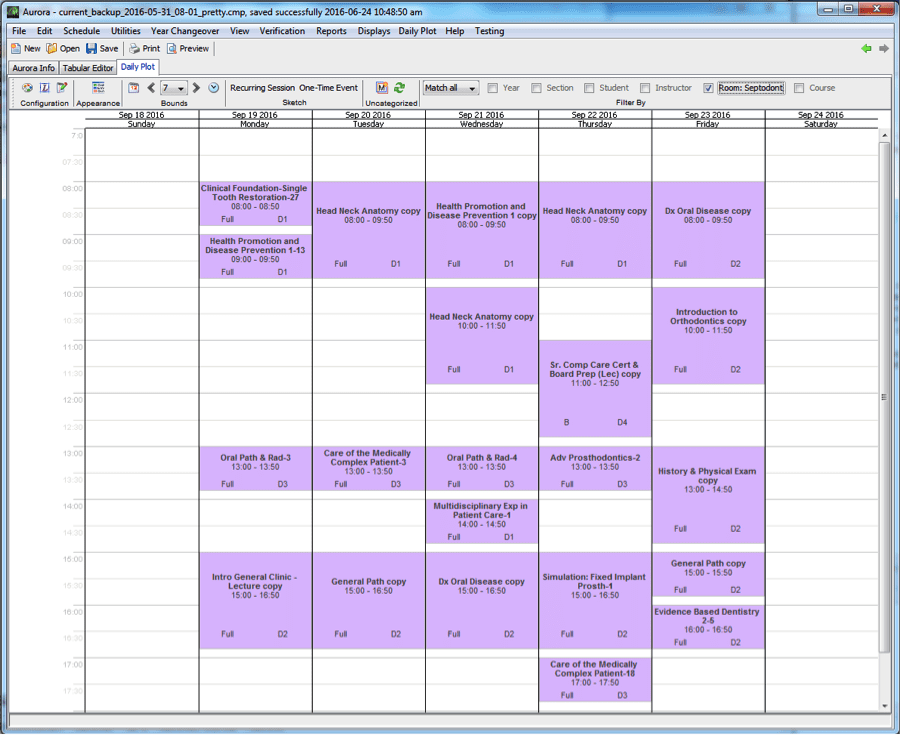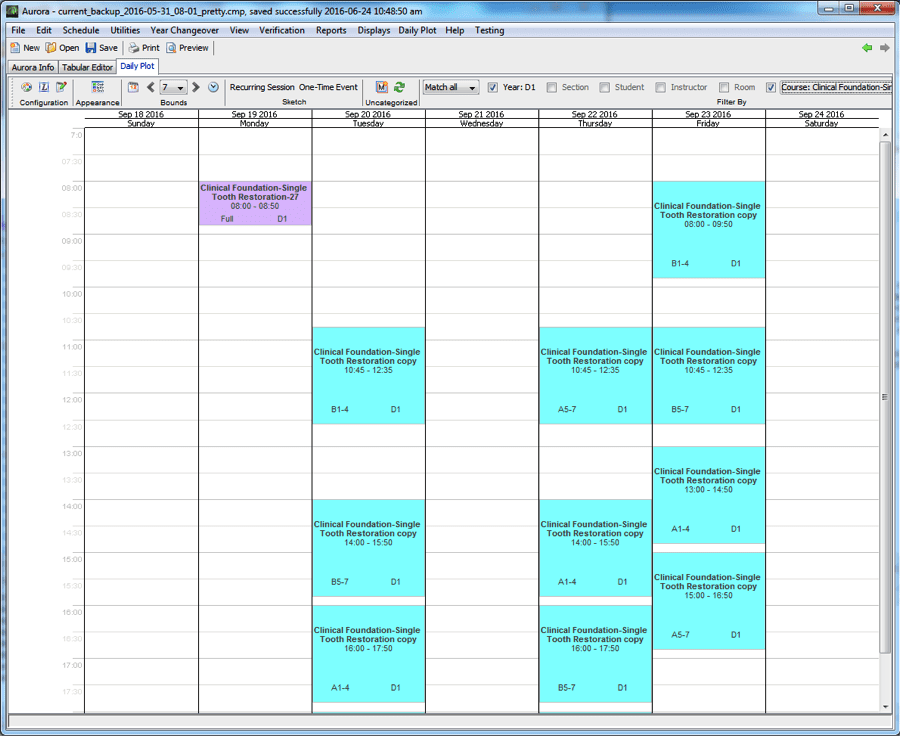Aurora-DentalResident
New York University College of Dentistry uses Aurora to schedule their DDS students through four years of training. As the biggest dental school in the US, NYU has 375-400 students per class, with about 1500 active at any given time.
The schedulers have several goals, including making sure that:
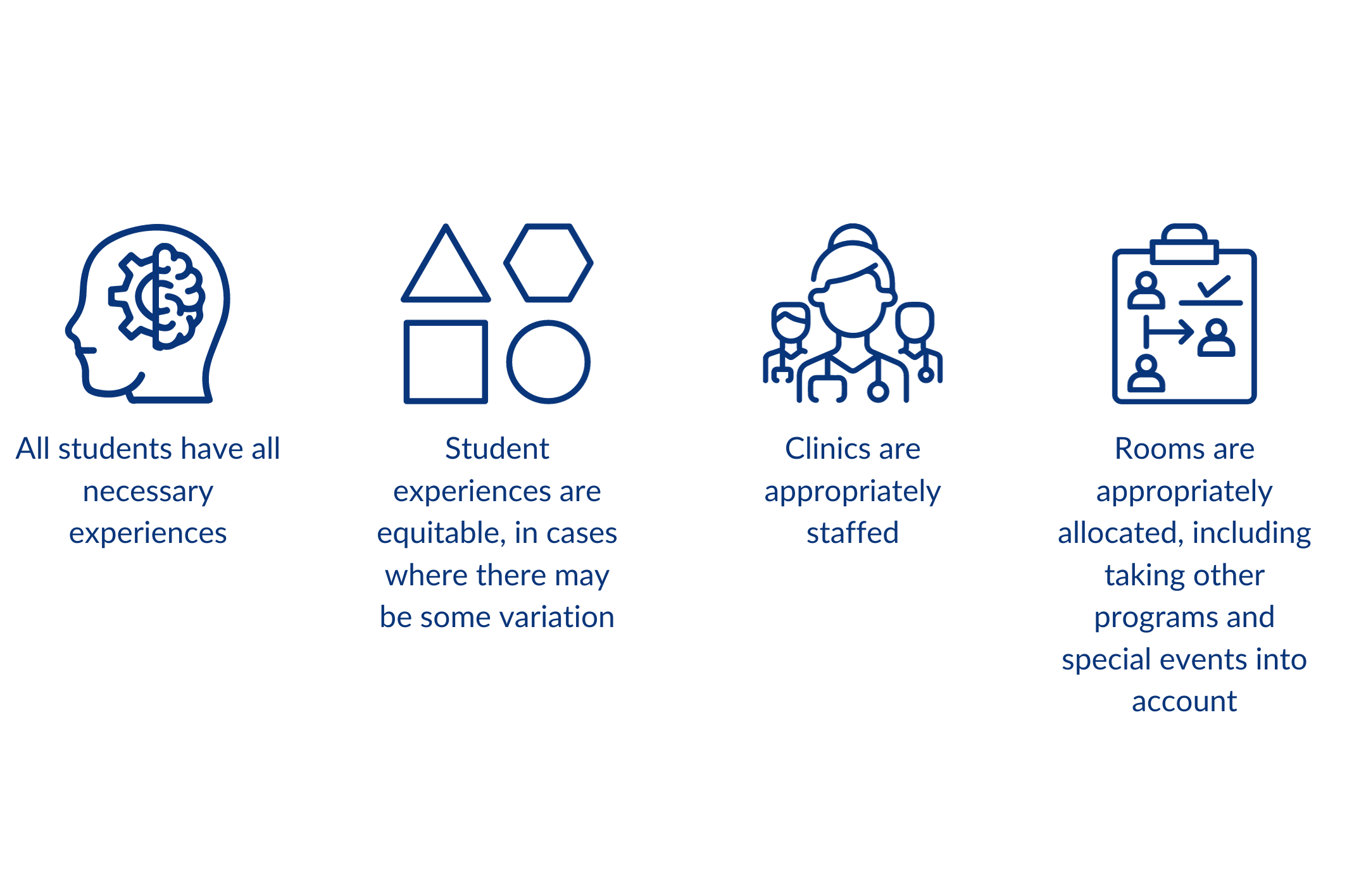
D1 & D2 (years 1 & 2)
The first two years of training are highly structured. Students go through lectures, labs, etc. with a group of students in their section. The sections form a hierarchy, and the number of students who can be accommodated by an experience determines the appropriate section to schedule.
For this section-based didactic schedule, the primary concerns are that sub-sections are not double-booked (e.g. small section A1A has an experience at the same time that large section A has a lecture, since the same students are in both, this situation would be a problem); that all atomic sections (the smallest unit) receive the same set of experiences as the other sections; and that the experiences have the necessary room allocations.
D4 student schedule; double-booking reflects preemption situation (most supplemental experience clinics are scheduled over General Clinic).
D3 & D4 (years 3 & 4)
The second two years, D3 and D4, are more complicated because a series of clinic experiences are layered over the didactic schedule. There is still a significant amount of didactic coursework that is scheduled on a section level, but the clinical experiences are scheduled on a per-student level, because not too many students can be absent from the atomic sections at the same time.
For D3 and D4, the concern is to minimize overlaps between the clinic experiences and the didactic experiences. However, overlaps are sometimes inevitable, and so it is important for the system to understand what overlaps are acceptable; which are to be avoided but are acceptable in a pinch; and which are unacceptable. A series of preemption information dictates this logic. The preemption information indicates whether one course can preempt (take precedence over) another course’s experience; and whether the other course will accept being preempted (having students pulled out of an experience). The overlap analysis for D3 and D4 takes the individual-level assignments into account, and gives the user visibility into the preemption acceptability level.
Aurora can allocate students to clinical experiences, taking these preemption relationships into account in order to satisfy staffing and experience requirements while minimizing preeptions.
Because the final schedule must be communicated to a large range of people, NYU’s version of Aurora offers a variety of export capabilities, including:
- Course-level schedules
- Student-level schedules
- Student rosters
- Clinic availabilities.
Stottler Henke has teamed with Above PAR Advisors (APA) to drive the success and maximize the value proposition of this implementation Also see the APA’s Stottler Henke Partner page.
Also, see our Aurora-DentalResident Brochure.
The Daily Plot allows the user to view the events that are occurring in a calendar-style view. The user can easily filter the plot by year, course, student, or room, or can define a more complicated filter criteria. This example shows the D1 schedule for one week.
